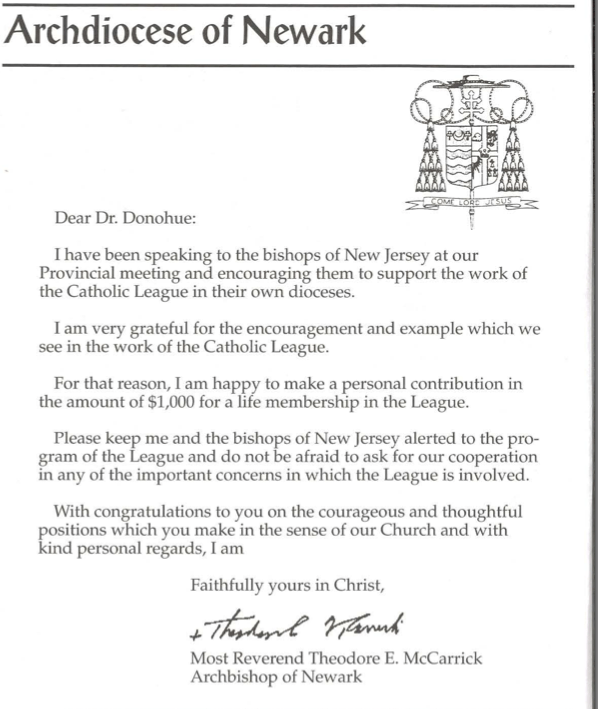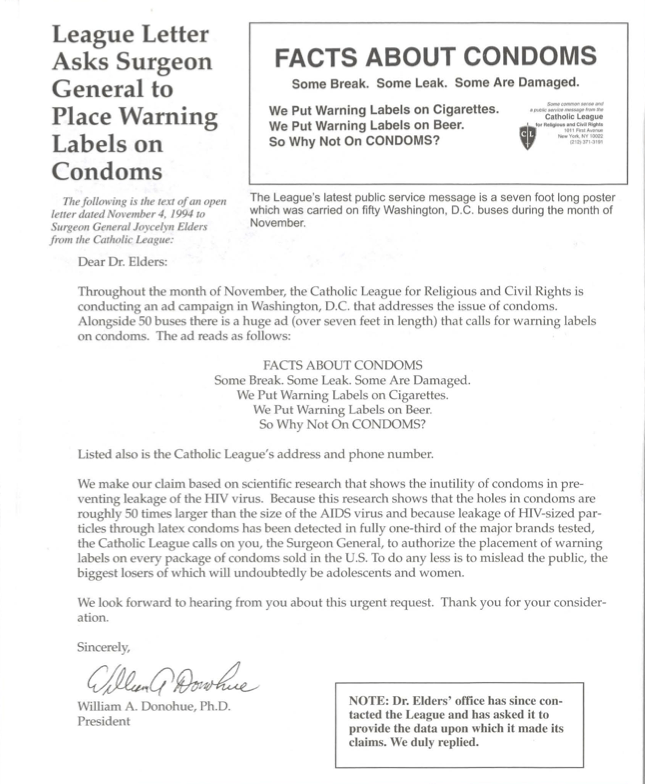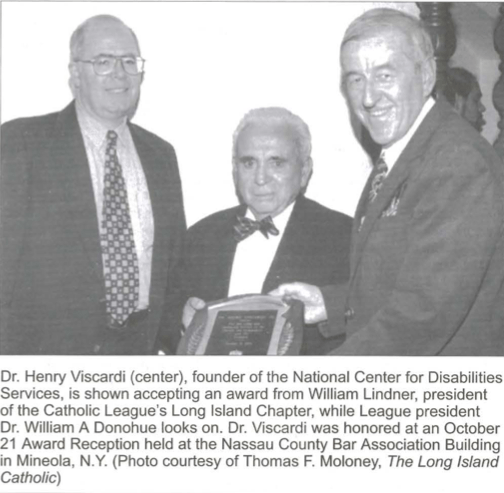by Robert P. Lockwood
It is true, though not always acknowledged, that there is an anti-Catholic bias in the press and in the media in general. Many reporters perceive a culture that is overwhelmingly secular and rational. Furthermore, they see secularism and rationality as equated with progress: human freedom, individuality, personal liberation from restrictive codes of morality and the like. Indeed, they embrace secularism as a way of life. For example, they view the role of religion in contemporary culture much as an Eastern European apparatchik a decade ago: a benighted, dangerous world view that should be kept off the streets, and confined to the sacristy.
These are the attitudes, certainly in general, that the press and media bring to their collective coverage of the Catholic Church. Richard Harwood, former ombudsman for the Washington Post, readily acknowledged it: “there is no question whatever that these media are secular institutions. There is no question that secular thought is the preferred body of thought within the media.”
Harwood sees this media secularism as merely reflecting the culture of the times and leading to a banal objectivity which tends to misunderstand Catholicism rather than openly oppose it. I see the results as more fundamental: the view of the media of the Catholic Church strongly and purposefully creates a negative caricature of the Church in American society; that the Church’s ability to impact on the culture is controlled and, in effect, censored by the press through an unwillingness to allow the Church’s views even a hearing in the public conversation; and, finally, that anti-Catholicism rooted in this secularism is utilized as a de facto tool of argument and presentation in the press, both in news coverage and opinion-making. Anti-Catholicism, like institutionalized racism, is normative in the press – acceptable, useful, and understood to be the product of an enlightened mind, rather than a nativist bigot. Strong words are not without strong dissent. Peter Steinfels, one of the few religion editors who regularly shows a sensitivity and understanding of the Catholic perspective on issues, denies that there is a normative anti-Catholicism. He believes that mistakes are made and bad conclusions reached simply through ignorance, rather than through a pervasive bigotry. That was also the conclusion of the Freedom Forum’s survey, “Bridging the Gap: Religion and the News Media.” That study contends that, surely, coverage of religion in general is “often superficial and sometimes wrong,” still “a misled public needs to know that journalists harbor no ill-will toward religion.” Yet, the facts of the matter cannot lead one to those conclusions. Surely, there is bad reporting on the Catholic Church simply through ignorance, particularly among the great unwashed periodicals outside the New York, Washington, and Los Angeles areas. Often, religion reporters are the cub on the beat – new kids fresh out of journalism school who don’t know an Anglican priest from an Orthodox rabbi.
But that is not the pervasive problem. Ignorance in the press over what is being reported on is not bigotry – it’s the order of the day. The pervasive problem in the press in regard to the Catholic Church is that the Church is viewed as alien, un-American, oppressive, puritanical, and a contrary and unacceptable public voice in the contemporary culture. The Church’s views can be dismissed not on their merits or lack thereof, but simply by their source since the views of the Church are at odds with the prevailing secularism by which the press defines American culture.
In addition, there is a consistent attribution of motives or agenda to the Catholic Church in its teachings so that such teachings are never reported at face value. Again, since the motives are primarily religious, the secular press refuses to see that as a serious motivation and looks instead for alternatives: greed, the desire to oppress and, of course, power. The assumption is virtually always made that when the Church states its beliefs in the public forum, or makes statements based on its beliefs, the motivating factors are false.
The anti-Catholic tactic of the general secular press in the United States is never to address the actual issue involved, but to invoke negative, nativist images of the Church to discredit the position. In 1990, a clear example of this was presented by David Boldt, senior editor of the Philadelphia Inquirer.
To briefly review, Boldt attacked the bishops of the United States simply for adopting a strong public voice over abortion. In his feature, Boldt never addressed that position nor attempted to counter it. Instead, he called the Church an “unAmerican” institution and gravely warned “how delicate the balance of Church and State is in regard to the Catholic Church in America.”
Over and over again, he dismissed the viewpoint of the Church not by contrary arguments, but simply denying the Church the right to speak on the issue, attacking it with insults and epithets and warning that if the bishops continued to publicly address this issue, there was a danger of “reawakening all the old religious prejudices” against Catholics, “by giving them substance.”
This is also an argument consistently used on the editorial pages of the New York Times. In effect, the argument is that if the Church refuses to keep its benighted views to itself, it can only expect a bigoted response, and reduction to the second-class status it had in this country prior to the election of John F. Kennedy. It is a curious argument as it blames bigotry on the victims of bigotry. It is like saying, if black Americans simply would avoid moving into white neighborhoods then they would not have to put up with burning crosses on their lawns.
The image routinely conveyed of the Catholic Church in the news media in the United States has been adequately documented in Anti-Catholicism in the Media, published by Our Sunday Visitor. The book contains the results of a study of media coverage of the Catholic Church conducted by the Center for Media and Public Affairs for the Knights of Columbus and the Catholic League for Religious and Civil Rights.
The study focused on coverage of the Catholic Church by the leading (and dominating) news outlets in American culture: the New York Times, the Washington Post, Time magazine and the “CBS Evening News.” The study focused on news reports, but also on columns, editorials, and op-ed pieces. This is important to keep in mind. When Peter Steinfels discusses ignorance, he is referring to cub reporters making ignorant factual mistakes in news stories. Where the use of anti-Catholic arguments, tactics, and presumptions most often appears is in commentaries, analysis, features and editorials.
To briefly summarize those results, the study of both news coverage and opinion pieces found that overwhelmingly “the descriptive terms most frequently applied to the Church emphasized its conservative theology, authoritarian forms of control, and anachronistic approach to contempo- rary society.” Church involvement in the public sphere “was always seen as an inappropriate threat to the separation of Church and State”- a threat, by the way, that is almost solely confined in the American press to fundamentalist Muslim terrorists and Catholic bishops. Additionally, and I would underline this, the report concluded that “an institution that was usually described as conservative and authoritarian, was also presented more often than not as irrelevant.”
The point is not to argue whether or not, by the culture’s definition or even its own definition, the Church is “conservative”or”authoritarian,” though certainly the presentation is purposely meant to convey a pejorative image.
No. The point is that the goal within the press and the methods employed are not to objectively and fairly present the Church’s position and respond to them; the goal is to dismiss whatever position the Church takes simply based on a negative and biased stereotype of the Church itself. The Church’s views in the public forum are “irrelevant” because the Church itself is “irrelevant.”
The secularization of the American culture has caused this nation to lose its soul. At heart, the anti-Catholicism of the press is the symptom of a major institution of American life that has become totally and completely secularized, so much so that it identifies that secularization with the American culture. This secularized press that is supposed to be the true marketplace of ideas of the republic, has jettisoned an entire approach to the moral, spiritual and political dilemmas we face as a nation. Our nation simply cannot function – cannot address the dire difficulties that plague our streets and threaten our freedoms – if we ban the spiritual from the marketplace of ideas.
For the Church, it is not “harmed” by this anti-Catholicism, no more than, in a historical framework, it was harmed by 45 years under Communist domination in Eastern Europe. A faith that counts time in eternals, is little harmed by the pebbles thrown at it by an immature, bullying press. But, as the Church’s goal is to evangelize the cultures in which it lives, that goal will be effectively blocked in America until the press can be brought to a true understanding of objectivity, and can throw off the shackle of bigotry that still binds it to a narrow, blind, and unthinking secular way of thought.
This article is excerpted from a paper presented by Robert P. Lockwood at the Fellowship of Catholic Scholars Convention, September 24, 1994, Corpus Christi, Texas. Mr. Lockwood is president and CEO o f Our Sunday Visitor, Inc., and is a member of the board of directors of the Catholic League for Religious and Civil Rights.


